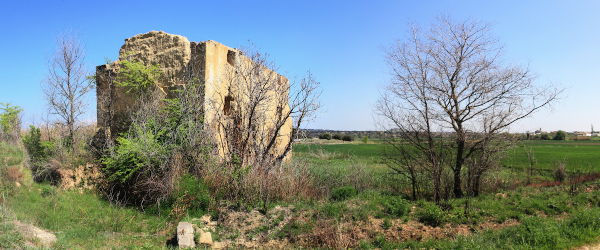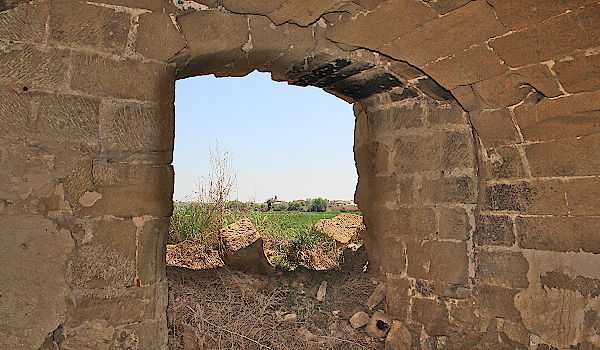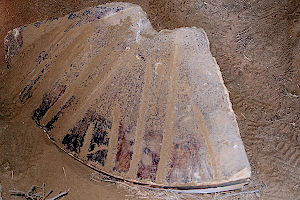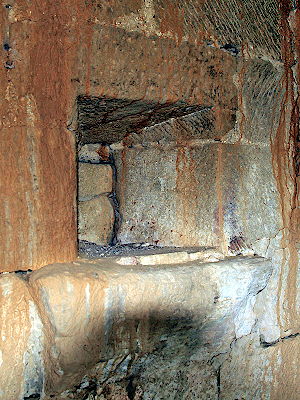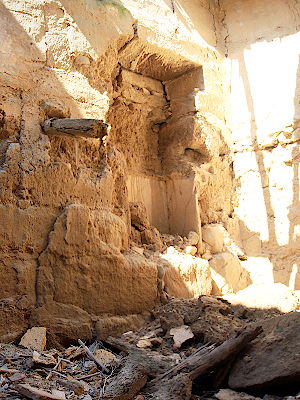Mills in Alto Aragón - harinero
Fañanás
Fañanás is a village in the
La Hoya de Huesca county. It is situated East of the city of Huesca.
From
Siétamo (on the N-240 and the A-22)
take the road to
Alcalá del Obispo and
Novales.
In
Alcalá turn left for
Fañanás.
At the entrance of the village left into the Calle Alcalá, then again left into the Calle la Paz and
continue into the Calle Molino. This street will eventually turn into a gravel road. Continue to the North for about 1km and you will find the mill (1) at your left hand side.
The mill got its water from the Río Gratizalema and is in a precarious state.
Pictures: 16.IV.2014

(2)
The window spaces (3) are telling us that the mill originally counted three levels. The two upper levels have collapsed (4) and only the ground level with the workplace is accessible.
A row of holes in the front wall (4) indicates that there was at some time in the past another construction
built against the mill proper.
The façade with the wide entrance (4) is also built against, and loose from, the rest of the
construction as is clearly visible from the inside (5). Notice that the door jambes, which were
curved at their outer sides (4), have disappeared.
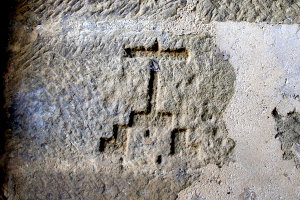
(7) Calvary in the wall next to the entrance.
The workplace (6) occupies most of the ground
level of the construction. The space is covered by an impressive barrel vault built with ashlar stones.
The room has a blind wall to the East (right in 6). The western wall shows two openings: a window
and a door of which the lower half has been closed in order to create a second window.
At the deep end of the workplace a narrow door gives access to a staircase leading to the second floor.
Notice that both this door (6) and the entrance (4, 5) are not in the axis of the vault.
The hurst frame was located at the deep end of the work place.
The bed stone is covering the roof of the cárcavo. The runner is broken in several sections that
can be found all over the place (6, 9).
A couple of steps to climb the hurst frame line the back wall
of the work place (8). Above them, in the wall, an opening can be seen (10, 6).
The opening (10) looks like an embrasure.
It doesn't make sense, however, to have an embrasure between two chambers of the same building. Unless,
of course, that the space behind the wall is an extension of more recent times. After closer inspection of the inner and outer walls, that doesn't seem to be the case, however. And the opening is also rather wide for an embrasure.
It is most probably a spyhole, in my opinion,
giving the miller the option to get a quick overview of the situation in his workplace,
without having to descend all the way down from his living quarters upstairs.
We have seen similar devices in the mills of
Siétamo (also in the wall
separating the stairs from the workplace)
and of
Jánovas (above the stairs, directly accessible from the living room).






